Abdominoplasty has always been a popular cosmetic surgery procedure. It is a truly brilliant solution to situations where people worry about excess skin & fat around the abdominal area and weakened muscles. Provided you are prepared for permanent scars & lengthy recovery period, it is advisable to undergo this procedure. Tummy tuck surgery will increase your self-confidence and allow you to put on clothes that you used to wear, but are no longer well-fitting. The results are usually long lasting, if you follow a balanced diet & exercise reasonably.
- Men - introduction
- Male genital surgery
- Male breast surgery - gynecomastia
- Abdominoplastics
- Liposuction
- Ear Reshaping Surgery - Otoplasty
- Nose reshaping surgery
- Eyelid Surgery
- Face and Neck Lift
- Happy lift Soft-Lift
- Injectable wrinkle treatments
- Laser treatments
- Gallery

Abdominoplastics

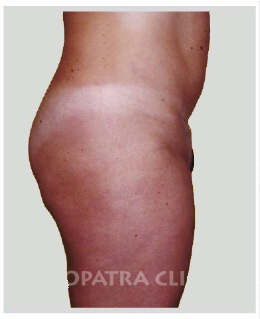
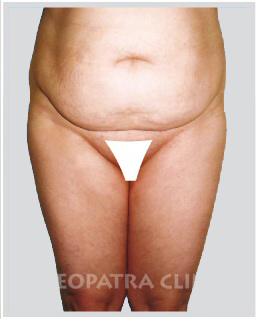
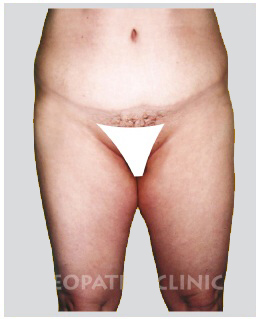

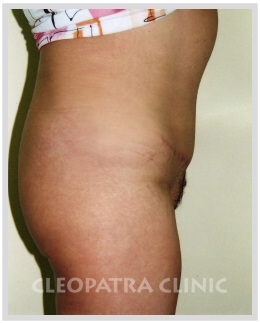
Gallery
Removing excess skin and fat by bikini cut with muscle suture, with navel shifting
before the procedure
after the procedure


abdomen - surgical removal of excess skin and fat removal of excess skin and fat by bikini cut with suture of muscles, with navel shifting
3 months after the procedure
before the procedure
after the procedure


3 months after the procedure
Removing excess skin and fat by bikini cut with muscle suture, with navel shifting
before the procedure
after the procedure


removing excess skin and fat by bikini cut with muscle suture, with navel shifting
3 months after the procedure
removing excess skin and fat by bikini cut with muscle suture, with navel shifting
before the procedure
after the procedure
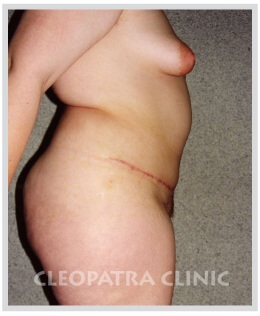
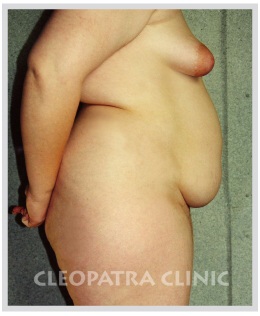
removing excess skin and fat by bikini cut with muscle suture, with navel shifting
3 months after the procedure
Introduction
The wife of a face-specialist plastic surgeon in the UK approached him a few years ago, and said she wanted an abdominoplasty. She’d given birth to their 3 kids…and she wanted some of her attractive abdomen returned to her. That lady, the daughter of a famous politician, insisted…even though her surgeon-husband said he loved her the way she is. But, anyway, he arranged with a surgeon colleague to do the job. The man did a great job. A superb abdominoplasty was achieved, and a surgeon’s wife was made very happy with her new, youthful appearance!
Nowadays, there is so much attention paid to a nice, young appearance including our body shape, more than ever before. The sedentary nature of much of our consumer society, shops full of seductive food, advanced automotive transport, decreased physical effort in work, and the unwillingness (or inability) of many people to do physical exercise – this all contributes to the increasing proportion of overweight or obese people. It is alarming that citizens of central European nations, and the UK, are statistically among the nations with the highest number of people carrying excess weight.
There’s a small percentage of people who have a strong will. They follow a balanced diet & exercise regularly, and try to keep a good body figure. However, there are some people who are sportsmen and who exercise daily, but still have some body parts with stubborn fat they cannot lose (or they can…but with difficulties). These include external parts of the hip areas, and certain females’ lower-belly & navel area. There are some people who have localised fat deposits in the abdominal area combined with not-so-strong stomach muscles.
Women after child-birth experience damage to the muscle structure in the stomach area. This happens when the direct abdominal muscles (diastasis) extend. Also, there can occur stomach ruptures or hernias (most often, of the navel). In such cases, any hopes for a “flat tummy”, without surgery, are very difficult, if not impossible, to achieve.
What is more, the situation can become even more complicated – if, after pregnancy, along with the lax abdominal wall the skin starts to sag & combine with stretch marks. Having your own children is definitely worth it, no question about it. But there is nothing wrong with thinking about what can be done to improve your abdomen, after effects of child-birth. Another group of patients considering stomach contouring are those who have lost a large amount of weight (20 kg and more). Such people may be post-op bariatric patients. Or…they may have lost the weight with good habits and will-power.
After significant weight loss, the skin fails to shrink back, and starts to sag. Many people are then left with heavy “apron” of skin around the abdomen. Skin rash might occur under this “apron” as a result of prolonged skin-on-skin contact. Abdominoplasty is a plastic surgery procedure designed to reshape your abdomen, so that it is more flat & firm. It is not, however, significant weight loss surgery. On the other hand, firming the muscles in the abdominal wall, in combination with a balanced diet & exercise after surgery, is likely to produce weight loss within a few months following surgery (5-10kg).
Tummy tuck is a procedure that will remove excess skin folds & fatty tissues from the abdomen, and tighten the muscles in the abdominal wall. This will give your body a flatter & tighter abdomen, and also a slimmer waist. In the event that there is only a thick fatty layer without sagging-skin-and-underlying-tissue, liposuction alone is a more suitable procedure (fat removal surgery performed with cannulas – see the liposuction chapter). In other cases where large excess fat & sagging skin occur together, liposuction can be performed in combination with other abdominal plastic surgery. At the consultation, your plastic surgeon will advise you on the most appropriate procedure for you.
Am I a suitable candidate for tummy tuck?
Your consultation will determine this. You will be asked about your medical history including details about any previous abdominal surgery or childbirth. Women planning pregnancy should wait until after delivery. If you smoke, you will be asked to stop (or at least significantly reduce) smoking for a minimum of 14 days before surgery. Smoking seriously constricts blood vessels and therefore decreases blood-flow to the specific area, resulting in worse healing.
Aspirin and some other anti-inflammatory drugs & medications may cause increased bleeding. So, these should be avoided 2-4 weeks before surgery. Furthermore, you will be given a special diet you should follow for two days prior to surgery. This diet leads to evacuation of the digestive tract so that the stomach & bowels are not burdened with digestion. Within the medical inspection, a physical examination will decide whether you are a suitable candidate for a tummy tuck procedure. And, what type will be the best for you. It should not be performed to correct obesity. Patients with 95-100 kg and more will be disappointed. Abdominoplasty is absolutely inadvisable for such obese patients. For two reasons. Firstly, they will not be satisfied from the cosmetic point of view, because the upper torso & buttocks will still keep a considerable fatty layer in the skin folds, which will contrast with a tighter and smaller abdomen.
Secondly, obesity is associated with an increased risk of complicated wound healing, but there is also much more serious risk – life-threatening complications. In order to avoid this situation and disappointment after surgery, and to minimise the necessity for a secondary (corrective) procedure, the best candidates are men & women who are within a few kilograms of their ideal weight.
As mentioned earlier, there are several variations in the abdominoplasty technique. The choice will depend on your skin quality & degree of sagging, the laxity of your muscles and the amount & distribution of fat. If you had any previous abdominal surgery, the scars may also be taken into account. Very rarely can the technique & scar extent be inspired by the patient’s wish. And, if it happens, it usually affects the surgery outcome. The final decision can only be made after a consultation & after a thorough examination.
However, generally speaking, if you have loose muscles & excess skin in both the upper & lower abdominal regions, with only moderate fat deposits, you will most probably need a full abdominoplasty. If you have loose skin mainly in the lower abdominal region but still retain good skin & muscle tone above the navel with only little-or-no excessive fat, then a “mini tummy tuck” may be applied. Alternatively, if there is only moderate excess fat in the upper abdominal area, then a combination of liposuction and “mini tummy tuck” can be used to get a better result.
But we should say that the term “mini” is improper in this situation, as the scar the surgery leaves is about 25 cm in length, and surely cannot be considered “miniature”. In most cases, another scar around the navel must be present. At your consultation, always remember to be open & honest with your expectations. We will also be frank with you and together we will work on choosing surgery that is the most suitable for you and which will fulfil, or come as close to your expectations, as possible. Another thing to keep in mind is, as we mention with other procedures, that the best candidates are people mentally stable, harbouring realistic expectations. Such people are willing to listen & follow the postoperative recommendations, including regular exercise and strengthening the abdominal wall.
What does the surgery involve?
You must understand that in the full abdominoplasty there is an “anchor” incision made, running through the middle abdomen from the rib cage around the belly button and down to underbelly and then another, long incision made traversing the “bikini line” (hip-to-hip) just above the pubic hair. The skin & a layer of fat is then lifted off the muscle from the lower horizontal incision up to the rib margin. The exposed muscles are then sutured or tightened as necessary using dissolvable stitches. By stitching the muscles together, a firmer abdominal wall & a narrower waist, is created.
If a hernia is present, a hernia-specialist surgeon will assist, performing the hernia repair.
The lifted layer of skin and fat is then stretched down towards the initial incision, and any redundant tissue is removed. These incisions are subsequently sutured, but not before a new hole for the belly-button, is made. Drainage tubes are usually put under the skin in order to evacuate any extra fluid that may collect in the first 24 hours after surgery. The tubes are removed when the fluid formation has stopped (usually 24-48hr).
What type of anaesthetic is used?
Abdominoplasty is practically always performed under general anaesthesia. With respect to the length of being under anaesthetic, scar extent, surgical areas & possible suture of abdominal wall muscles, usually two days of hospitalisation are recommended. With less extensive abdominal techniques, sometimes only one-day stay is sufficient.
Is it painful?
Soreness & discomfort are subjective sensations, but it is true that abdominoplasty surgery is one of the most painful procedures. This will be most noticeable when you start standing or walking in the first few days after surgery. In order to minimise the pain, analgesics will be administered to you during your stay. You’ll also receive painkillers for using at home. All of these, are already included in the price of surgery. You will need to take painkillers for about 3-4 days, but no more than a week. It is usually not the surgical wounds that cause pain, but the sutured abdominal wall muscles. If, in very rare cases the muscles do not require suture, then even the postoperative pain is mild!
What happens after the operation?
As soon as you wake up, you will notice a compression elastic garment around your waist & abdomen. This garment will help compress the surgical area & reduce the postoperative swelling & bruising. You will also observe one or two drain tubes that collect any accumulated fluid after surgery. These are usually removed within 24-48 hours following the operation. You will experience some pressure & soreness in the abdominal area. You will also notice that your knees are raised, supported by a special part of the bed so that the tension in your abdominal muscles & sutured sites, is reduced. For the same reason, you will be advised to walk with a forward lean for several days following surgery. All incisions apart from the one around the navel are sutured with dissolvable stitches, so you do not need to worry about the suture removal. Immediately after the operation, you will receive infusion solutions, analgesics, anti-thrombosis medications & antibiotics. You will be also asked to exercise your legs and, perform breathing exercises. You should expect that for the first 48 hours after surgery, before your bowel passage is fully recovered, we will not serve solid food.
What should I expect after tummy tuck surgery?
Following the operation, you will experience considerable swelling & sometimes even bruising in the abdominal area. This condition will be even more noticeable if the tummy tuck surgery is combined with liposuction. The bruising usually lasts about 3 weeks. Most of the swelling will have subsided by this time. Nevertheless, minor swelling might be present for up to three months after surgery. Soon after surgery, you’ll definitely notice that your abdomen is very firm to touch, especially along the edges of the incision sites. This happens as a result of the normal healing process. It usually takes three months to resolve, but you can facilitate the process by pressure massages & wearing elastic garment. We recommend to wear the garment for 6-8 weeks after surgery. You should expect reduced skin sensation in the abdominal region. This is a result of surgical damage to the skin nerve branches in the area. It is completely normal phenomenon call ‘parasthesia’. The sensation is usually regained within a few months.
What are the scars like?
As explained before, abdominoplasty produces extensive scars. These usually extend from hip to hip – above the pubic region in a horizontal line. Sometimes it may be necessary to add another incision – a vertical one below & above the belly button. Therefore the anchor-like-shape scar is left. Although surgeons try to suture the incisions as neatly as possible, it is almost impossible to predict any scars ultimate appearance. In fact very seldom can the abdominoplasty scars be described as hairline. Still, you should understand that because of the normal healing process the scars are red, raised and lumpy in the first few weeks following surgery. But they settle, get softer & fade over time. In any case, the scars are permanent!
What could go wrong?
When a tummy tuck procedure is performed by a qualified plastic surgeon, the risks are usually small. Nevertheless, specific complications can & do occur. Like any other surgery, abdominoplasty carries the risk of infection. This can be minimised by careful surgical technique & preventative administration of antibiotics during and after surgery. However, you should know that despite these precautions, mild infection is occasionally reported, usually around the incision sites. This infection of local wound clearance or additional antibiotic therapy subsides within 2 weeks. There is the risk of blood clots (embolism); its occurrence is, however, rare. Clots are avoided due to the preventative administering of medications reducing blood clotting properly, and due to the early verticalisation of the patient. We urge the patient to start moving as soon after the surgery as possible. You also should expect swelling, as mentioned earlier. Mild swelling will be quickly reabsorbed by the body.
Very rarely, increased bleeding is present that can lead to more significant swelling and the formation of haematoma (a blood collection under the skin). Should this happen, surgical drainage to remove this would be necessary. Another possible complication is a collection of fluid called a “seroma” under skin-fatty layer – in the place where the skin was lifted off the muscle. This fluid has clear, yellow, amber colour.
This complication appears as a swelling in the lower abdominal area, and a lot of patients describe this as a movement of this fluid under the skin. It usually occurs about 10 days after surgery. The treatment will depend on the amount of fluid present. If the amount is small and is not causing any physical problems, only a pressure garment is applied, and the body reabsorbs the fluid, usually within a month. However, if seroma occurs in a considerable amount & causes pain or discomfort, the primary treatment is to evacuate the fluid with a needle. After that, the swelling & unpleasant feelings rapidly disappear.
It is usually necessary to repeat this procedure a couple of times, and every time the abdomen must be bandaged so that the cavity does not fill quickly again. With the anchor incision, it is important to emphasise a quite frequent complication. It is a defect where the vertical & horizontal incisions meet. This occurs as a result of a worse blood supply to the lower fat layer. The skin usually takes 7-10 days to heal. But the lower fat tissue has less-optimal healing qualities – the fat dissolves, and this amount of fat dissolves the scar, and the defect develops. These can be quite small, but sometimes also rather big in size. Then you should expect prolonged healing (in weeks), more frequent re-bandages, wearing elastic garment for a longer time and longer after-care according to instructions.
How long before I get back to normal?
Abdominoplasty is a serious operation, and you should respect it accordingly. You are likely to wait a couple of weeks before you feel yourself again. Also keep in mind that the time individuals take to heal significantly varies. To get an idea – although most patients are able to return to light work duties by 10-14 days, others need to take further 1-2 weeks to recuperate. Walking is appropriate in the first 3-4 weeks since it improves blood circulation & helps reduce the swelling and the risk of developing blood clots. Heavy lifting & any strenuous activity is prohibited in the first 6 weeks after tummy tuck surgery. If you feel soreness or pressure while doing an activity, stop doing it!
If I have flown, or travelled overland, to Ostrava to have this treatment, how soon can I travel back to my home country, and what does it mean for follow up visits?
For this procedure, you will be required to arrive at Cleopatra Clinic in Ostrava, at least ……(hours/days), before your operation, so that you can be prepared in the clinic. You (will/will not be) be required to stay over-night, on the night before your surgery, at the clinic. Immediately after your surgery, you will stay recuperating at Cleopatra Clinic for …....(hours/days). After completing this short Clinic-stay period, you must stay in your (hotel/apartment above Clinic) in Ostrava area for at least…..(hours/days), to comply with post-op check-up & bandage changes. After this period, you are fit to fly or travel overland, back to your home country. Your Cleopatra Clinic surgeon will advise you, at consultation, or during your initial phone call/email to us, about the possibilities of you arranging with a doctor in your home-country to perform final bandage-change/stitches-removal, where relevant. (Also, please do pay attention to your Cleopatra Clinic surgeon’s advice regarding necessary medical preparation documents you’ll need, before you travel to Ostrava, such as EEG, blood-tests, and chest x-ray, where applicable, for this type of operation.)
Can I travel to Ostrava as part of a holiday, and incorporate my first consultation at Cleopatra Clinic, into that holiday?
Of course you can! We have had several satisfied clients already, who dropped by our clinic to register their interest & intent to have an elective operation with us, and who’d actually been on vacation in the West Poland/East Czech Republic area. They had heard that Czechoslovakia is actually the birthplace of many historical advances in plastic surgery; and whose surgeons continue to teach and make advances in this area of medicine, finding new techniques which are then adopted & emulated by other surgeons all over the world.
There are many people who come to this part of the world to enjoy Poland’s Zakopane, Katowice, & Krakow, and Prague in Czech Rep., who made the trip to us, to make enquiries! Ostrava itself is a great little city, with a proud tradition of hardworking people, nestled in the west Silesia region. Many German, British, Danish and other European nationalities enjoy visiting this area, and find it a pleasure to travel on the Ostrava trams! With airlines such as Germanwings, Wizzair, Ryanair, easyJet and others, it is possible and more than convenient to travel here to enjoy the scenery, the local delicious local cuisine…and 500mls mug of delicious local Ostravar beer! Ostrava itself is undergoing a regeneration, and there are several top class new shopping malls you can visit, if so inclined. Also, go onto ‘trivago.com’, and get really great deals on hotels in every price range!
Summary
Our services
Write us
We will call you in the shortest possible time (within 1 hour).







